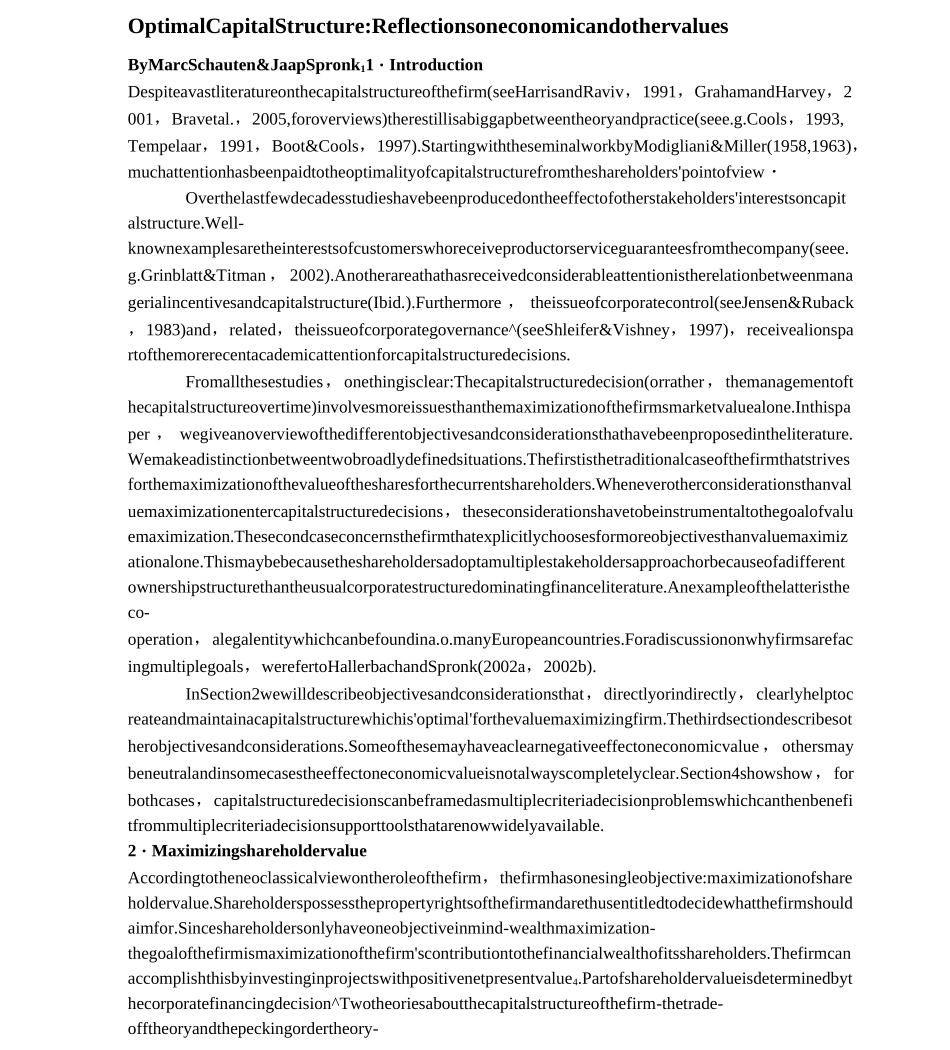OptimalCapitalStructure:ReflectionsoneconomicandothervaluesByMarcSchauten&JaapSpronk11・IntroductionDespiteavastliteratureonthecapitalstructureofthefirm(seeHarrisandRaviv,1991,GrahamandHarvey,2001,Bravetal.,2005,foroverviews)therestillisabiggapbetweentheoryandpractice(seee.g.Cools,1993,Tempelaar,1991,Boot&Cools,1997).StartingwiththeseminalworkbyModigliani&Miller(1958,1963),muchattentionhasbeenpaidtotheoptimalityofcapitalstructurefromtheshareholders'pointofview・Overthelastfewdecadesstudieshavebeenproducedontheeffectofotherstakeholders'interestsoncapitalstructure.Well-knownexamplesaretheinterestsofcustomerswhoreceiveproductorserviceguaranteesfromthecompany(seee.g.Grinblatt&Titman , 2002).Anotherareathathasreceivedconsiderableattentionistherelationbetweenmanagerialincentivesandcapitalstructure(Ibid.).Furthermore , theissueofcorporatecontrol(seeJensen&Ruback,1983)and,related,theissueofcorporategovernance^(seeShleifer&Vishney,1997),receivealionspartofthemorerecentacademicattentionforcapitalstructuredecisions.Fromallthesestudies,onethingisclear:Thecapitalstructuredecision(orrather,themanagementofthecapitalstructureovertime)involvesmoreissuesthanthemaximizationofthefirmsmarketvaluealone.Inthispaper , wegiveanoverviewofthedifferentobjectivesandconsiderationsthathavebeenproposedintheliterature.Wemakeadistinctionbetweentwobroadlydefinedsituations.Thefirstisthetraditionalcaseofthefirmthatstrivesforthemaximizationofthevalueofthesharesforthecurrentshareholders.Wheneverotherconsiderationsthanvaluemaximizationentercapitalstructuredecisions,theseconsiderationshavetobeinstrumentaltothegoalofvaluemaximization.Thesecondcaseconcernsthefirmthatexplicitlychoosesformoreobjectivesthanvaluemaximizationalone.Thismaybebecausetheshareholdersadoptamultiplestakeholdersapproachorbecauseofadifferentownershipstructurethantheusualcorporatestructuredominatingfinanceliterature.Anexampleofthelatteristheco-operation,alegalentitywhichcanbefoundina.o.manyEuropeancountries.F...


